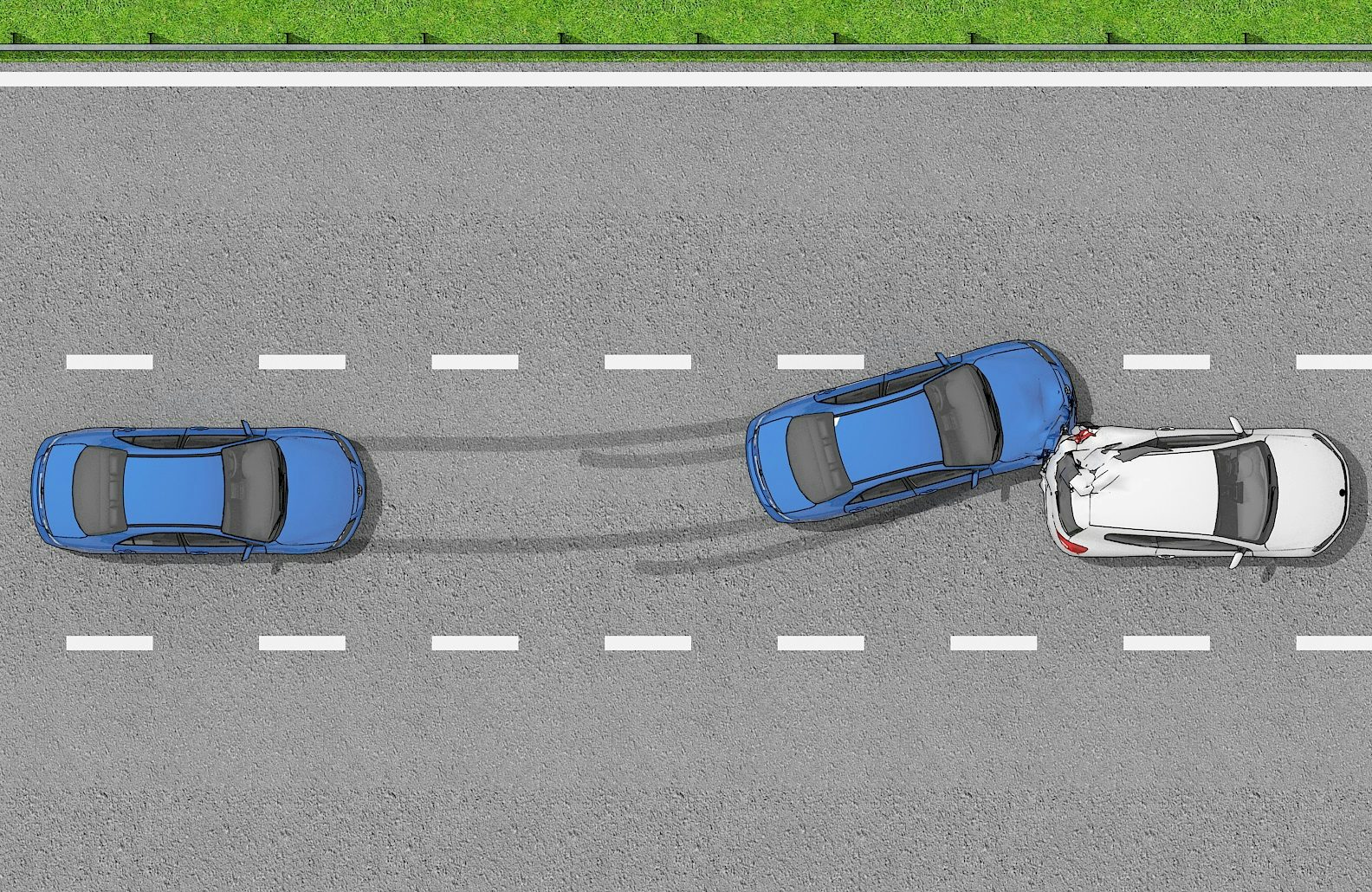
Always maintain a safety margin around the vehicle by keeping distances to other vehicles and by driving at appropriate speeds. Having a sufficient safety margin could mean the difference between safely avoiding a collision and being involved in a fatal crash.
In this lesson you’ll learn about:
- Safety Margins
- The ‘2 second rule’
- Stopping distance, braking distance & thinking distance
- Tailgating
Road safety is directly affected by the safety margins as maintaining a sufficient safety margin allows a driver time to undertake action to avoid potential accidents.
Create a ‘Buffer’ Around Your Vehicle
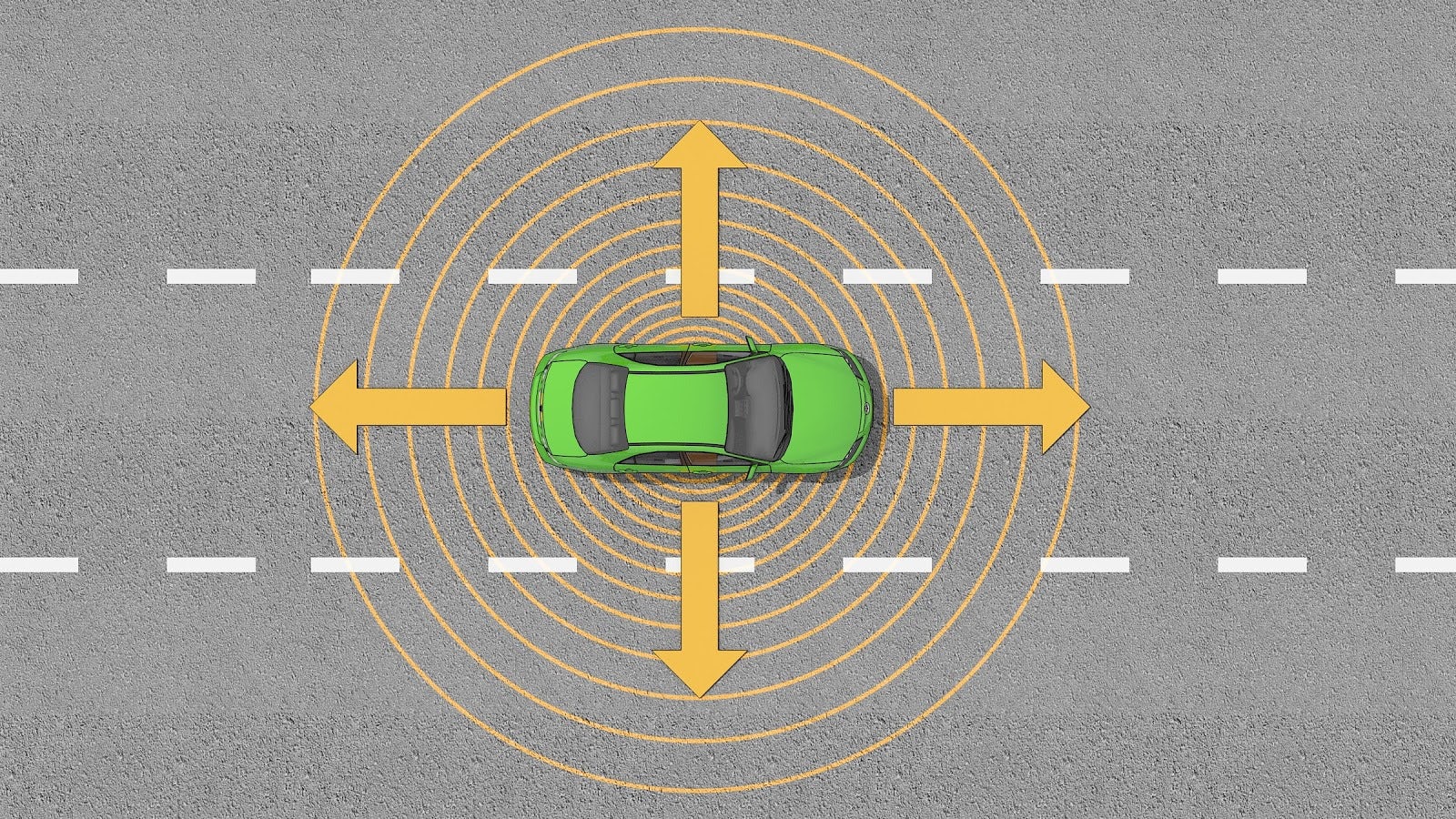
Give yourself time to react by creating a ‘buffer’ between yourself and potential hazards. For example:
- Keep a safe distance from parked cars to avoid pedestrians and/or doors opening
- Before changing lanes, make sure that you have enough space around you
How Much Safety Margin do I Need?
How much safety margin you need is determined by a combination of the time you need to react and the time you need to respond. You should have a sufficient distance to the vehicle in front so that you have time to react and safely stop or steer away to avoid a collision.
If something moves into your safety margin - slow down to maintain your buffer. When you spot a potential hazard, you should prepare to stop by smoothly slowing down while keeping your foot on the brake.
The '2-Second Rule'
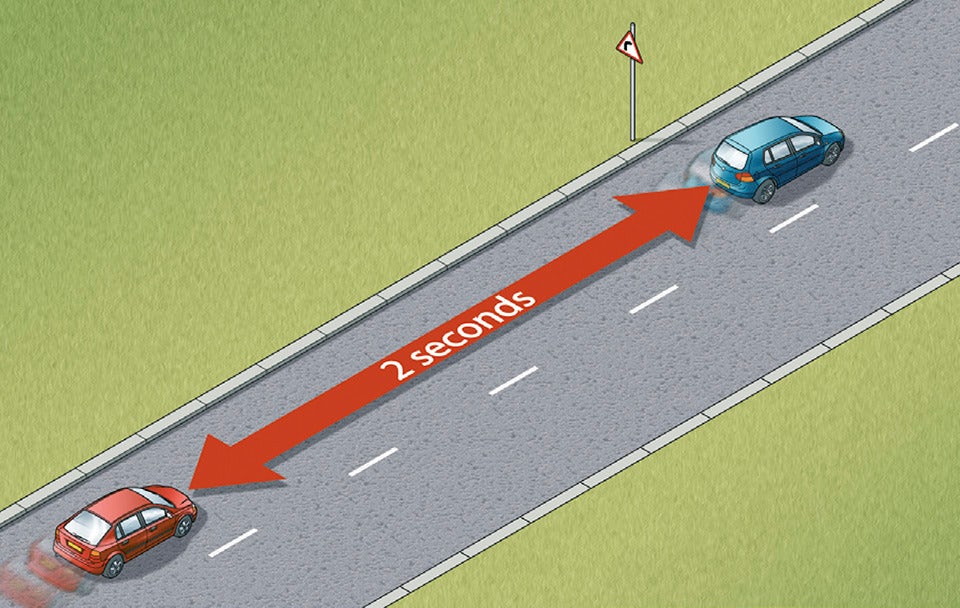
A general rule is to have at the very least a 2-second gap to the car in front of you, called the ‘2-second rule’. You can measure this by a simple test:
- Note when the vehicle in front of you passed an object (road sign, building, etc.) and count the seconds until you pass the same object
If less than 2 seconds, slow down! If just above 2 seconds, it is still safer if you slow down additionally.
Keeping to the two second rule allows you to have a safe following distance to the car ahead and with that the room and time to take evasive action when needed.
A 2-Second Gap Leaves No Room for Error
Keep in mind that a 2-second gap leaves no room for error, so it's often a safer option to have 4 seconds or more. Conditions are rarely perfect, and you might need a much longer time to react and respond safely.
You should always drive at a speed suitable to the conditions - slow down and increase your following distance when:
- Road conditions are bad (e.g. wet, icy or gravel roads)
- Driving in low visibility situations
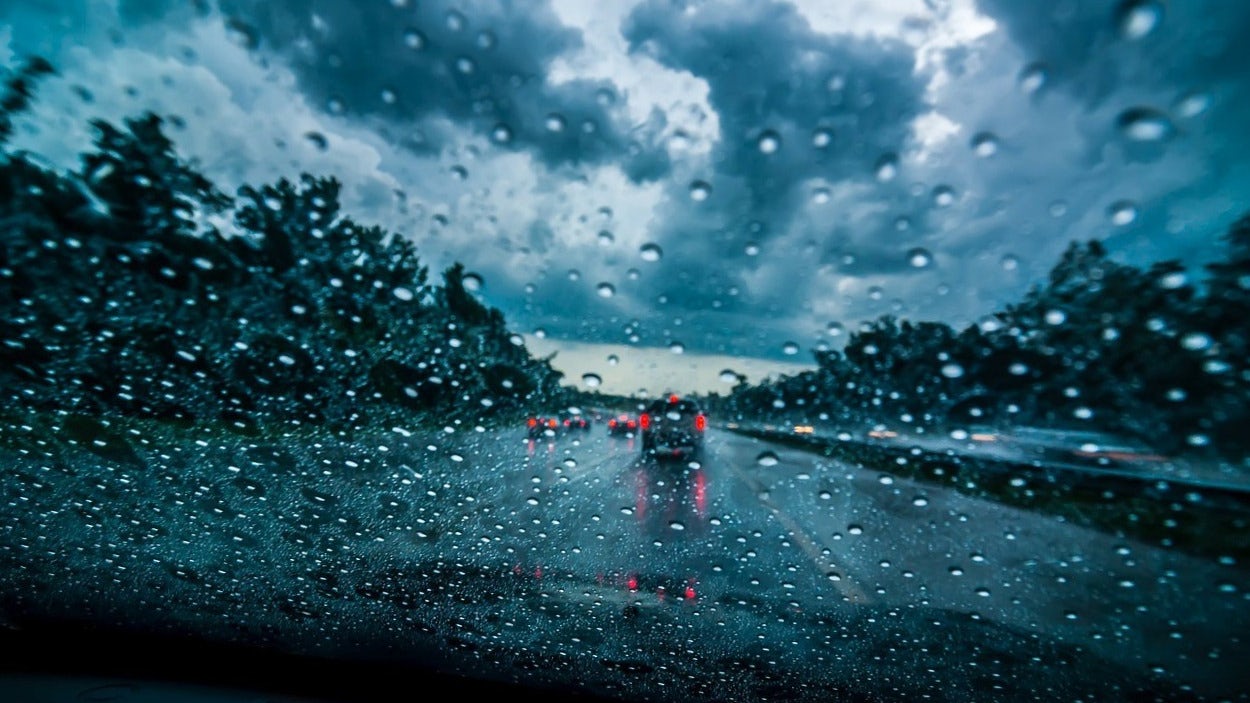
Additionally, increase following distance and be extra careful:
- When driving with a heavy load
- When driving on a gravel road
- When following large vehicles. If you're too close, the lorry will block your view of oncoming traffic, and the driver won't see you
What Is the Car Stopping Distance?
The total stopping distance = thinking distance + braking distance.
Thinking distance - (also referred to as “reaction distance”) is the distance your vehicle has travelled while you react. At 60 mph you travel roughly 18m during the time it takes you to react.
Braking distance is the distance that it takes your vehicle to come to a full stop starting from when you start applying the brake. At 60 mph you need roughly 55m to come to a stop in good conditions.

Keep a speed that enables you to stop in time for a hazard on the road ahead, e.g. wildlife
Speed makes a very big difference to your ability to stop in time and a significant difference to your chance of being involved in a crash. Doubling the speed will increase thinking distance by 2 and braking distance by 4.
What Is the Stopping Distance at Different Speeds?
- At 30 mph you need around 23m to come to a complete stop (9m to react and 14m to brake) in good conditions
- At 60 mph you need around 73m to come to a complete stop (18m to react and 55m to brake) in good conditions

What Will Affect the Stopping Distance?
Stopping distance is affected by:
- Reaction time
- Tyre condition
- Road conditions
- Weather conditions
- Hazard perception skills
- Vehicle’s condition and braking capacity
What is Tailgating?
Failure to leave enough space in front is called tailgating. Tailgating leads to limited vision and less time to respond in case the vehicle in front needs to brake and is a common cause of rear-end crashes.
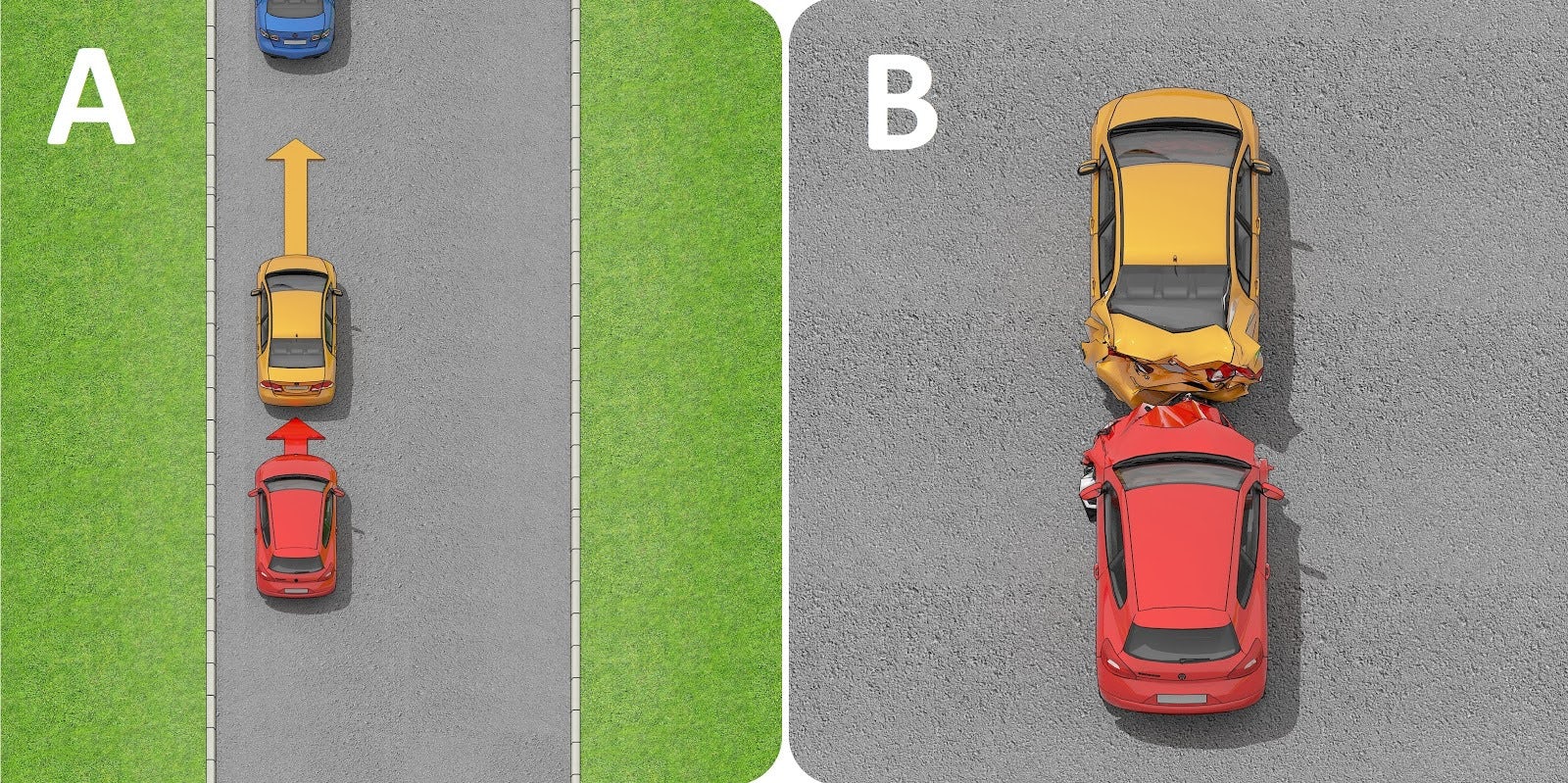
If you’re being followed too closely, increase the following distance by slightly reducing your speed. That way you can avoid having to brake hard if the car in front brakes suddenly.
